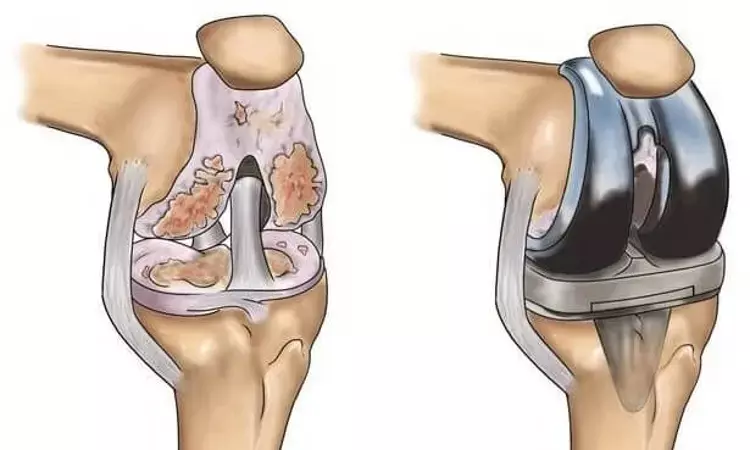- Home
- Medical news & Guidelines
- Anesthesiology
- Cardiology and CTVS
- Critical Care
- Dentistry
- Dermatology
- Diabetes and Endocrinology
- ENT
- Gastroenterology
- Medicine
- Nephrology
- Neurology
- Obstretics-Gynaecology
- Oncology
- Ophthalmology
- Orthopaedics
- Pediatrics-Neonatology
- Psychiatry
- Pulmonology
- Radiology
- Surgery
- Urology
- Laboratory Medicine
- Diet
- Nursing
- Paramedical
- Physiotherapy
- Health news
- Fact Check
- Bone Health Fact Check
- Brain Health Fact Check
- Cancer Related Fact Check
- Child Care Fact Check
- Dental and oral health fact check
- Diabetes and metabolic health fact check
- Diet and Nutrition Fact Check
- Eye and ENT Care Fact Check
- Fitness fact check
- Gut health fact check
- Heart health fact check
- Kidney health fact check
- Medical education fact check
- Men's health fact check
- Respiratory fact check
- Skin and hair care fact check
- Vaccine and Immunization fact check
- Women's health fact check
- AYUSH
- State News
- Andaman and Nicobar Islands
- Andhra Pradesh
- Arunachal Pradesh
- Assam
- Bihar
- Chandigarh
- Chattisgarh
- Dadra and Nagar Haveli
- Daman and Diu
- Delhi
- Goa
- Gujarat
- Haryana
- Himachal Pradesh
- Jammu & Kashmir
- Jharkhand
- Karnataka
- Kerala
- Ladakh
- Lakshadweep
- Madhya Pradesh
- Maharashtra
- Manipur
- Meghalaya
- Mizoram
- Nagaland
- Odisha
- Puducherry
- Punjab
- Rajasthan
- Sikkim
- Tamil Nadu
- Telangana
- Tripura
- Uttar Pradesh
- Uttrakhand
- West Bengal
- Medical Education
- Industry
Alternate type of surgery may prevent total knee replacement

An underused type of knee surgery in younger patients, called high tibial osteotomy, shows considerable success in reducing the need for total knee replacement, according to new research in CMAJ (Canadian Medical Association Journal).
"High tibial osteotomy is a knee surgery aimed at younger patients in the earlier stages of knee osteoarthritis. One of its goals is to prevent or delay the need for knee replacement," says coauthor Dr. Trevor Birmingham, Canada Research Chair in the Faculty of Health Sciences and the Bone and Joint Institute at Western University, London, Ontario. "In some ways, it's like performing a front-end alignment on your car to stop asymmetric wear on your tires and increase their longevity."
Knee osteoarthritis is a common cause of pain and disability and puts tremendous burden on health care systems. Total knee replacement is frequently performed on older patients with end-stage disease and limited mobility.
In Canada, rates of total knee replacement are high and increasing, while rates of high tibial osteotomy are low and decreasing. One reason for this is the perception that high tibial osteotomy is not warranted if the joint is going to be replaced soon afterwards. The findings of this new study contradict this perception.
Of the patients in this study getting high tibial osteotomy in London, Ontario (643 knees in 556 patients), 95% did not need a total knee replacement within 5 years, and 79% did not get a total knee replacement within 10 years. Even in patients traditionally not considered ideal candidates for high tibial osteotomy (e.g., women and patients with later-stage disease), about 70% did not get a knee replacement within 10 years.
The procedure is particularly suitable for people who are younger, have less severe joint damage and who may be more physically active. "Those patients especially contribute to the burden of knee osteoarthritis," says Mr. Codie Primeau, lead author. "There is a treatment gap between exhausting nonoperative treatments and appropriateness for joint replacement, resulting in many years of pain, lost productivity and associated costs."
"Given these findings, high tibial osteotomy may be underused in Canada and could be performed more often to delay or prevent the need for total knee replacement," says coauthor Dr. Robert Giffin, professor of surgery at Western University's Schulich School of Medicine & Dentistry and the Bone and Joint Institute.
"Total knee replacement after high tibial osteotomy: time-to-event analysis and predictors" is published February 1, 2021.
https://www.cmaj.ca/content/193/5/E158
Hina Zahid Joined Medical Dialogue in 2017 with a passion to work as a Reporter. She coordinates with various national and international journals and association and covers all the stories related to Medical guidelines, Medical Journals, rare medical surgeries as well as all the updates in the medical field. Email: editorial@medicaldialogues.in. Contact no. 011-43720751
Dr Kamal Kant Kohli-MBBS, DTCD- a chest specialist with more than 30 years of practice and a flair for writing clinical articles, Dr Kamal Kant Kohli joined Medical Dialogues as a Chief Editor of Medical News. Besides writing articles, as an editor, he proofreads and verifies all the medical content published on Medical Dialogues including those coming from journals, studies,medical conferences,guidelines etc. Email: drkohli@medicaldialogues.in. Contact no. 011-43720751


